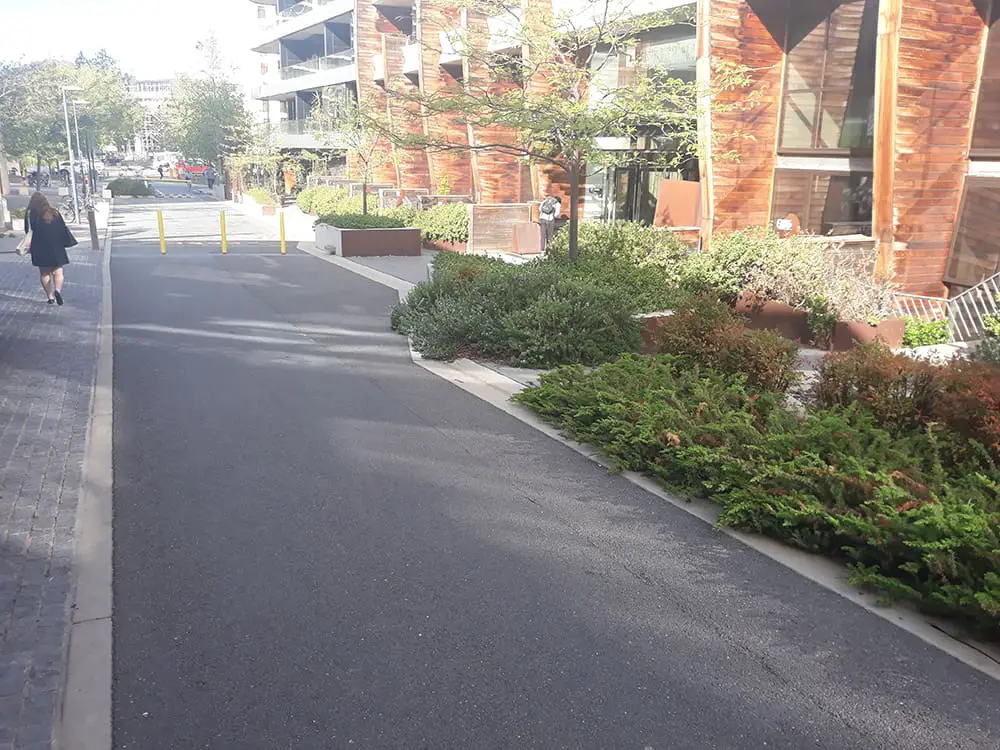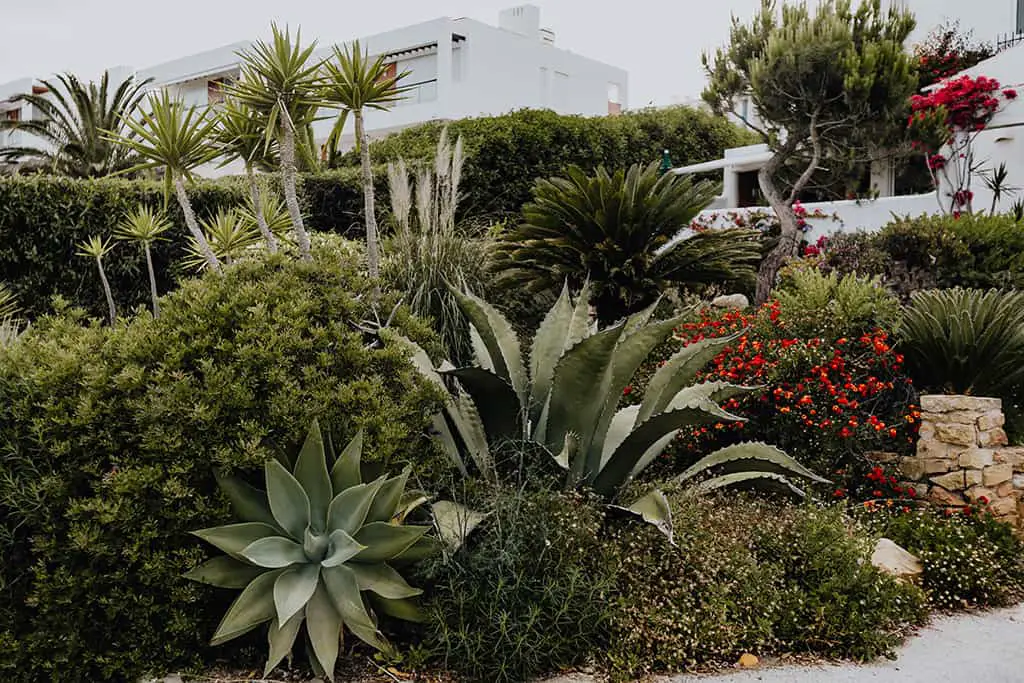A lot of people ask what rules they should follow to develop a great landscape design.I've put together a list of 21 rules based on my experience and background in landscape architecture.
To create a beautiful & unique landscape design, regardless of your situation, you want to:
- List what you want toincludein your garden/yard
- Find your sites "problems"
- Find your sites "opportunities"
- Look beyond yourborders
- Learn to take ideas fromunexpectedplaces
- Articulate how you want tousea space
- Articulate how a space shouldlook
- DON'T drawrandom linesto create spaces in your yard
- DO use your surroundings to help "shape" your design
- Use objects around you to determine suitabledimensions
- Iterate– explore an idea or design further
- Iterate again– don't settle for your first design
- Minimiseyour colour and material palette
- Don't be scared to design anddream biggerthan you can ‘do' right now
- Make sure each area/space in your design "works" for you
- Choose plants and materialssuitable for your conditions
- Getlocal expert helpwhere you need it
- Plant inodd numbers
- Spend yourmoney where it counts
- Havemultipleplant, material, layout & construction options
- Know when tobreak the rules!
Following these concepts will ensure your landscape design suits yourhouse, your preferredstyle, yourlocal conditionsand, most importantly, yourwantsandneeds.
Let's have a look at each rule in more detail.
Feature Image: Design byGround Studio Landscape Architectureas part ofButterfly House by Feldman Architecture.Image fromarchdaily.com
1.List What You Want To Include In Your Yard
The easiest way to get started is to define what you want to include in your garden or backyard.I break most things you could think of into three categories:
- Activities– things you want toDOin the yard.Something you leave the house for.You physically occupy the space to "use" it.
- Features– things youSEEin the yard.Something that is visually appealing.You don't need to be ‘in' it to "use" it.
- Miscellaneous Ideas– things that don't quite fit the other two.They might be little tricks or hacks that can help bridge two different spaces.
Write down a list of all the different things you want to do, see and include in your design.This helps narrow your focus.
It's not a finalised list.It should be fluid, changing as you find new things you want to include, and remove old things as you go.
2.Find Your Garden‘s "Problems"
This is done through site analysis (learn a basic approach in my6 Step Beginner's Guide).
You look at your surroundings – weather, the ground you're working with, buildings and existing elements on your site – and note some of the troublesome, tricky areas.Some common problems could be:
- A steep slope
- A low, wet area
- Shady space where nothing grows
- Area exposed to strong wind or sun
Making notes of some of the problem areas in your yard helpsdefinethem clearly.When you understand a problem, it's easier to research and find asolution.
3.Find Your Garden's "Opportunities"
Just like problems, you can find opportunities in your yard through site analysis.To find yourrealopportunities, you need to ignore where youthinkactivities or features should go and look atfavourable conditionsin your yard.
If you get lovely sunshine down the side of your house, think about what activities or features from your list you could ‘fit‘ there.Or maybe a shaded area becomes a place to escape and relax, hidden from view.
Sometimes you might find ways to extend an existing element into an area that has favourable conditions forwhenyou want to use it.Like extending a deck into a spot that enjoys late afternoon sunlight.
You won't notice them all at once, butactively lookingfor opportunities may help you discover spaces for things you had previously rejected from your list.
4.Look Beyond Your Yard's Borders
As you work through a little site analysis, consider not just what is inside your property boundaries, but also what's inneighbouring areas.
You may find a number of problems you have to deal with – like neighbours looking into your garden.Or opportunities you can take advantage of – a lovely view of a tree, plants, garden or building.
Sometimes this is thecheapestway to make a space pretty.Provide an opportunity for a feature outside your garden toenhanceyours.

5.Learn To Take Landscaping Ideas FromUnexpectedPlaces
Many people fall into the trap of treating inspiration and ideas assolutions to problems.You have a problem – you need ‘something' down the side of your house – so you look only for ‘side-of-the-house' ideas.
In reality, you can take ideasforany space,fromany space.
Try todescribe what you likeabout the piece of inspiration you have and see if you can copy those points into your current area.
Sometimes the best spaces are created by stealing a concept from somewhere else.It could be acombination of shapes, colours or materials.Or thecontrastbetween these things.
I've developed a way of "unpacking" ideas from any source in what I call myIdea Generator "Cheat Sheets".If you'd like a free copy of this, click through tolearn moreand sign up for the occasional email I send through.
6.Articulate How You Want ToUseAn Area In Your Yard
As you work through a few different ideas, think about howYOUwould use the space.For example, if you want to design avegetable garden, think about how much area you willactuallyneed.
Don't just assume you should have 3 x 30 sq ft vegetable beds because you saw itsomewhere else.Consider the amount oftimeyou are willing to dedicate to this activity.And what kind of vegetables, fruits and herbs you are likely togrow and use.
The better you can write down anddefine how you personally (and your family) want tousean area, the better it will meet your needs.
7.Articulate How An Area Shouldlook
Similar to how you use it, try to define how you want it tolook.
This doesn't necessarily mean theexactmaterials you will choose.It's more about thecolours, shapes, finishes and combinationsof those things.

So rather than knowing the specificplantsin the garden bed above, I can note some of the things I like about it that I'd like to emulate in my design.
- The strong ‘star' shapes of the plants at the front
- The contrast between them and the softer plants around them
- How they seem to 'emerge' from within those plantings
- The floating spiky heads of the plants behind – giving a bit of vertical layering
- The contrast between those spiky heads and the soft feathers of the grass next to it
- The weathered, twisted look of the small tree growing to the right
- The pops of red and pink within the predominantly green, tan and grey garden bed
Note I didn't have to really ‘know' what any of the plants were.I just need to outline what I like about the image.Similes – I want something "like" that – is the way to think about it.
As you'll see later, you can take these points to a local expert who can help find suitable options to match these points.
8.DON'T Draw Random Lines To Create Spaces In Your Yard
Another common mistake people make when trying to begin a design.
I call this kind of approachpainting.And while it can sometimes work, it generally leads to a design that completelyignoresthe unique elements of your garden and site.
You can use this essentially arbitrary approach in smaller doses – perhaps for less important areas like the outline of a garden bed, or the layout of plants within one.
Try to not to start your entire landscape design by drawingrandom lines.Instead, follow the next rule.
9.DO Use Your Surroundings To Help"Shape"Your Design
When starting your designs, take theedgesandmidlinesofwalls, windows and doorsand drawstraight lines out into the yard.
You shouldn't try to useeveryline, but having them there helps youcreate boundariesandcarve up spaces.Instead of having a random width for a garden bed, try to align the edge with one of these ‘regulating lines'.
And it's not just your house that can help shape spaces.You can look at neighbouring elements likebuildingsortrees.Or large elements on your own property.
Sometimes the best way to define a space is usingsite conditions.Slopes, flat areas, certain existing materials all could define one area.Or maybe ephemeral conditions like sunlight and shade could help partition areas.
The point is, use your surroundings – both physical and environmental – to help determine edges and transitions from space to space.

10.Use Objects Around You To Determine Suitable Dimensions For Your Garden
You'll find, as you refine things, that you have no real idea how big or small, narrow or wide, something should be.The easiest way to at least get in the right ballpark is to look at theexisting world around you.
Everything around you has been designed to suit the needs of (most) people.That means a the height of a seat for a chair falls within a prettystandard range– probably 15 – 20″ (38 – 50 cm).Same for the depth of a chair – 26 – 32 inches (70 – 80 cm).
If you're unsure about how long, tall, wide, narrow or deep something should be, look atphysical things in your house.Doorways, benches, seats, corridors etc.are often designed to standard sizes.You can use these as a base for your own design, and tweak to suit your needs.
11.Iterate– Explore A Landscape Idea Or Design Further
Iteration is the act ofredoing something, but changing it slightly in response to feedback.
So when you come up with a landscape layout or plan you like, redraw it andchange things arounda little.It might only be one or two things – swap spaces around, or change the layout of walls or benches.
Take what you have done and alter things slightly to see what happens.If you don't like the newer version, that's fine.It's just a drawing, and you still have the first version to work with again.
The core of good landscape design is iteration.Keep exploring.
12.IterateAgain华体会ufc– Don't Settle On Your First Garden Design
Just in case you didn't get the message, keepexploring, keepiterating.
It's easy to settle on the first design you like.Or, heaven forbid, the first design youdo.This is notrealdesign.
华体会ufcGood garden design relies oneliminating bad options.And the only way to eliminate the bad is to actually draw them and explore them.Then you can determine why theydon't work.
It may be this design doesn't fit all the things you want to include.Or places some of them in bad positions – too dark or too small.Or perhaps you can't make the material or colour palette work across all the spaces.
Basically, if I ask you why you put your vegetable gardenhereand notthere– and you can't give me an answer – you haven't fully explored all options.Take the time to iterate, explore, swap and change everything in your design.
华体会ufcWhen you've done this properly, you can point to your chosen garden design and say, definitively, this one is thebest.
13.华体会ufcMinimise Your Colour And Material Palette In Your Garden Design
To help you when starting, try to develop a set ofcoloursormaterial choicesthat you stick to.
Just like styling a room in your house, having a limited palette keeps things tidy.And allows you to ‘break' from this palette in certain specific instances.
An easy way to start is to think about your preferred gardenstyleand look up inspiration and examples of it.
Take a few materials and colour combinations from them, and add them to the existing ones on your house or property.Then you have a set of colours and materials (and maybe material finishes) that you can design around.
14.Don't Be Scared To DreamBiggerThan You Can ‘Do' Right Now
So right now you may not have the funds or time to complete your best or favourite landscape design.That's OK.
The best thing about a design is it can be aplan.Aroadmapfor how you get from here to there.And like all journeys, they can take time.
Knowing how much things will cost, and what materials you need, allows you to save money and build your garden instages.
This means even if you're broke right now, you can still design the garden of your dreams.You know what you want to build, androughlyhow much it will take to get there.You just have to recognise it will take time to make it come to life.
15.Make Sure Each Area In Your Yard "Works" For You
As your designing your garden or backyard, you want to check that each area you design allows you todo what you want to doin it.
So if you want a lawn to play with kids or pets, try to figure out an approximateminimumsizeyou want so you can do this.Then, as you design, make sure you aren't creating plans with lawnssmallerthan that.
It can work in the other direction as well.Again, if you are a casual gardener, don't design acres of garden beds you need to spend hours maintaining.
Think about how youuseeach area, how muchtimeyou will spend in it, and how mucheffortyou want to put into maintaining it.
Try to design things that meet your needs and don't force additional chores onto you.That's how people come to resent the lovely, but too large, houses they purchase and spend all their time cleaning.Don't fall into that trap.

16.Choose Plants And Materials Suitable For Your Site Conditions
This one is pretty obvious, but is helped by rules 7 & 13.
If you candescribe how you want something to look– the colours, materials, combinations and contrasts – you can find options thattick those boxes, yet may be better suited to your location.
They don't necessarily have to be native or local options, but they should be able to handle the kinds of conditions – especially the extreme conditions – your site experiences.
This saves you money and time – you buy something that will survive, and spend less time maintaining it.
17.Get Local Experts To Help Choose Appropriate Options For Your Design
This ties into the previous rule.Describing or showing expertswhat you wantcan help them determinesuitable options for your specific needs and location.
And it's not just about material and plant choices.
Designers or landscapers could outline the bestconstruction practices– how things are generallypreparedandsequenced.This might change your design layout, or perhaps which order you choose to build things.
华体会ufcRunning your garden design/s by experts is a great way torefine your design, making it more robust and more likely to work.
18.Plant In Odd Numbers
An oldie but a goodie!
If you aremass planting one plant, try to group it inodd numbers.3, 5, 7 and 9 generally look more appealing than even sets.This matters less as you get into the teens and twenties, but for smaller numbers, odd works better.
This is useful when it comes to adding the finishing touches to a design and you need to figure out how many plants you need to cover a specific space.If given the choice, go formorethan you technically need, and anodd number.
19.Spend Your Money Where It Counts
Another common mistake people make is to design and build little parts of their yard separately – as littleprojects.
The problem with this approach is you not only design spaces in isolation, where they're less likely towork together, but you end up spendingmore moneyper project than you would as a full design.
When you do have a final design you want to build (or have someone build for you) you are better able toallocate resources(time and money) to the areas that mattermost.
You can splash out on the nice paving stones, and perhaps cut back on some of the expensive plant choices in a low visibility or low traffic area.
Or opt to buy larger, more mature plants, because you're saving money in another area of your design.
All of this is easier to cost and figure out with a full design.And works especially well when we consider our final rule.
20.华体会ufcHave Multiple Plant, Material, Layout Or Construction Options For Your Garden Design
One you have a design you want to build, take the time to research (online or with experts) multiple options for as many parts of your design as you can.
Take particular care to try and findmultiple options at different prices points.
As I said in the previous rule, having a full design gives you the ability toadapt to changes.It might be funds increasing or decreasing.Or discoveries – during the build!– that prevent you from constructing something how you'd planned.
If you have multiple options available to fall back on, you know that you canquickly pivot from one option to another.Not only that, but you can be confident that this new choice willwork with your design aesthetically.
21.Know When To Break The Rules!
Although the rules listed above will help you create something amazing, they're not mandatory.You're free to break the rules when you think itworks.
If youarbitrarily placed somethingin your design, and it holds everything together, keep it!
If you want ariot of colours and shapesbecause it matches your personality, go for it!
Like the best artists, if you understand the basics and rules above, when you break them, it's bychoice, not throughignorance.And that often makes the difference.
So there you go.Follow these 20 rules and you're sure to create a unique, and well tested, landscape design.Something that can adapt to whatever changes life throws at you.

